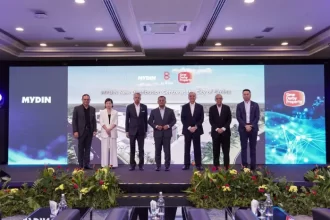In today’s fast-changing economic landscape, a striking trend is emerging: the rise of side hustles, particularly among Gen Z. No longer content with traditional 9-to-5 roles or linear career paths, this generation—born between the late 1990s and early 2010s—is turning to freelance gigs, digital entrepreneurship, and passion-driven side projects to create income streams that offer more freedom, flexibility, and financial resilience.
This seismic shift is not just transforming the nature of work; it’s redefining values around career identity, wealth-building, and success itself.
Gen Z and the New Work Paradigm
Gen Z grew up in the age of social media, smartphones, and the gig economy. They witnessed the impact of the 2008 financial crisis on their parents and came of age during the COVID-19 pandemic, which disrupted traditional employment models. This generation values flexibility, autonomy, and purpose. As a result, they are less likely to see a single employer as the key to lifelong stability.
Instead, they are crafting portfolios of work—balancing full-time roles with freelance projects, running e-commerce businesses, managing YouTube channels, offering tutoring on platforms like Fiverr, or even monetizing content on TikTok. Their motto? “Don’t put all your eggs in one basket.”
The Digital Ecosystem Driving the Hustle Culture
Several digital platforms have fueled the side hustle boom:
- Etsy, Shopify, and Depop: Empowering young creators and resellers to launch their own online shops.
- YouTube, TikTok, and Instagram: Turning content creation into lucrative micro-businesses.
- Upwork, Fiverr, and Freelancer: Offering access to a global freelance marketplace.
- Patreon, Substack, and Ko-fi: Helping creators earn directly from their communities.
Armed with nothing more than a smartphone and Wi-Fi, Gen Z is transforming hobbies into side incomes, and side incomes into main businesses.
Financial Motivation with a Purpose
While money is a driver, it’s not the only motivator. Gen Z side hustlers are also seeking:
- Autonomy – The freedom to choose when, where, and how they work.
- Creative Expression – The opportunity to pursue passions that a corporate job might not allow.
- Skill-Building – Gaining real-world experience in digital marketing, content creation, design, and more.
- Social Impact – Launching cause-driven businesses or using platforms to raise awareness about climate change, social justice, and mental health.
Many of these side hustlers see their projects not as a means to quit their day jobs immediately but as long-term investments in personal growth and financial independence.
Challenges Along the Way
Despite the benefits, side hustles come with their own challenges:
- Time Management: Balancing multiple income streams with study or full-time jobs can lead to burnout.
- Lack of Benefits: Gig work doesn’t come with healthcare, paid leave, or retirement savings.
- Financial Instability: Income from side hustles can be unpredictable, especially in the early stages.
- Tax Complexity: Side hustlers often need to navigate confusing self-employment tax laws.
Still, Gen Z appears undeterred, viewing these hurdles as a fair trade-off for the freedom side hustles provide.
Employers Are Paying Attention
Forward-thinking employers are beginning to embrace the side hustle mindset. Companies that allow flexible schedules, remote work, and even internal entrepreneurial programs are more likely to attract and retain Gen Z talent. In fact, some businesses are now partnering with creators and freelancers as collaborators rather than competitors.
Rather than a threat to traditional employment, the rise of side hustles may ultimately foster more dynamic, empowered, and innovative workers—whether they remain employees or go full-time entrepreneurial.
Education Is Adapting Too
Universities and vocational institutions are also taking note. Courses in digital entrepreneurship, content creation, social media management, and coding are being offered to meet the rising demand from students who want to “build something of their own” even before graduation.
Financial literacy education is also becoming a priority, as more Gen Zers face self-employment taxes, invoicing, and budgeting for inconsistent income.
A Glimpse into the Future of Work
The rise of side hustles signals a fundamental evolution in how younger generations perceive work. For Gen Z, career paths are less about job titles and more about personal freedom, skill growth, and aligning values with action.
Their ability to adapt, monetize creativity, and leverage technology points to a future where work is no longer a place you go, but a lifestyle you design. The traditional boundaries of “employee” and “employer” are fading, replaced by hybrid roles, digital portfolios, and empowered micro-businesses.
Whether this shift leads to more security or more fragmentation remains to be seen—but one thing is clear: Gen Z is not waiting for the future of work. They’re building it.








